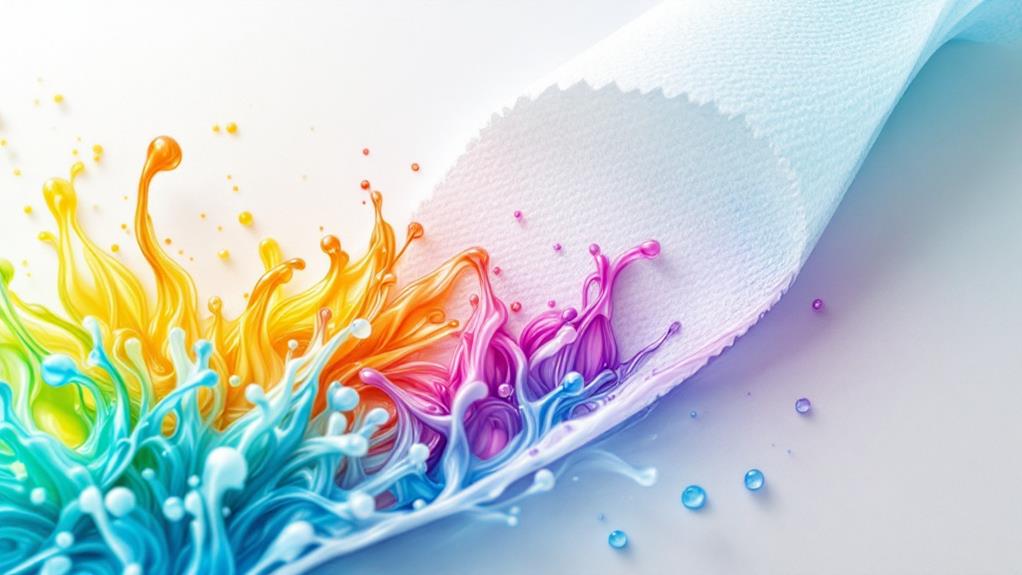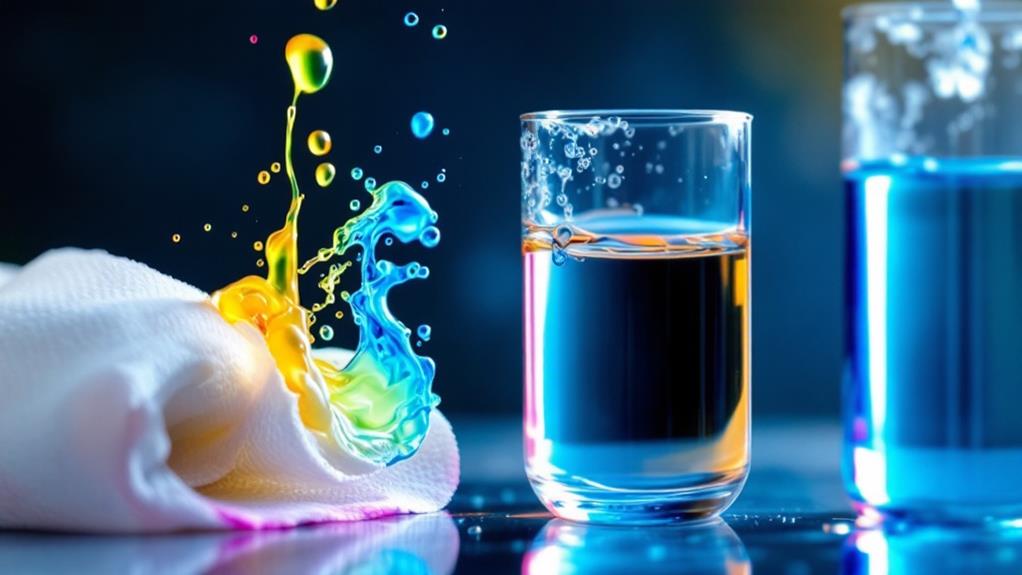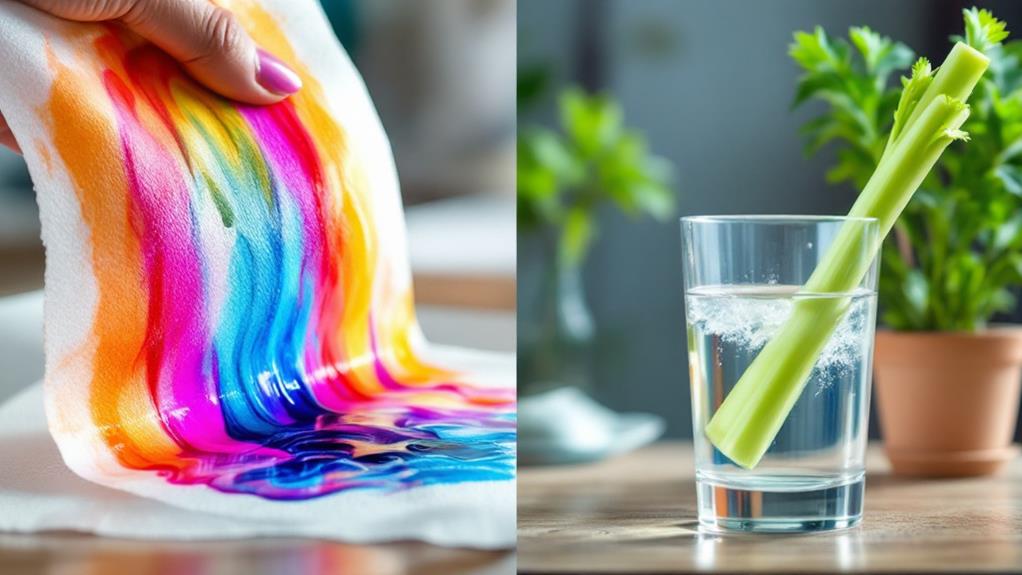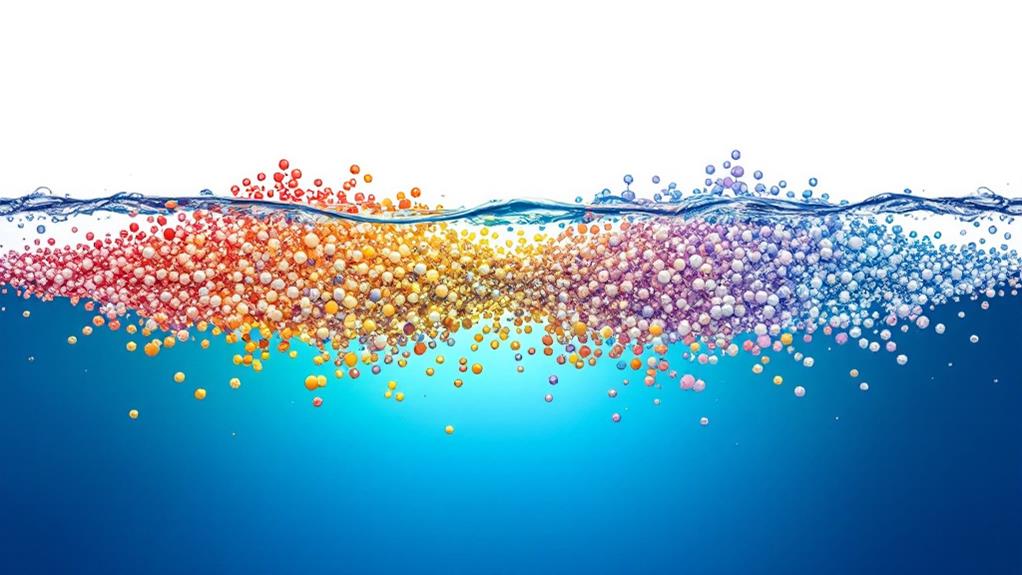What Is Capillary Action and How Does It Work? A Simple Explanation

Capillary action is a natural phenomenon that allows liquids to flow upward against gravity in narrow spaces. It occurs due to the interplay between adhesive forces (attraction between the liquid and surface) and cohesive forces (attraction within the liquid). You'll see this in action when a paper towel absorbs a spill or when plant roots draw water from soil. The liquid rises until the upward force equals gravity's pull, forming a curved surface called a meniscus. This process is vital in nature, enabling trees to transport sap and blood to flow through tiny vessels. Understanding capillary action can help you manage water more effectively in various settings. Curious about its applications in technology and daily life?
Definition of Capillary Action
Capillary action is the ability of a liquid to flow against gravity in narrow spaces. You've likely observed this phenomenon in everyday life, such as when a paper towel absorbs spilled water or when plant roots draw water from the soil. This process occurs due to the interplay between adhesive and cohesive forces.
Adhesive forces are the attractive forces between the liquid molecules and the surrounding surface. These forces cause the liquid to "stick" to the sides of a narrow space. Cohesive forces, on the other hand, are the attractive forces between the liquid molecules themselves, which keep the liquid together.
When the adhesive forces are stronger than the cohesive forces, the liquid will climb up the sides of the narrow space, forming a concave meniscus. This creates a pressure difference that drives the liquid upward, defying gravity. The narrower the space, the higher the liquid can rise.
Capillary action plays an indispensable role in many natural and artificial systems, from the transport of water in plants to the function of wicks in candles and oil lamps. Understanding this principle helps explain various phenomena and has practical applications in fields like materials science and fluid dynamics.
How Capillary Action Works
In order to comprehend how capillary action functions, you'll need to contemplate the interplay of several physical forces. At its core, capillary action is one of nature's fluid transport mechanisms, relying on the delicate balance between cohesion and adhesion.
Cohesion refers to the attraction between molecules of the same substance. In liquids, this creates surface tension, causing water droplets to form and resist separation. Adhesion, on the other hand, is the attraction between different substances, such as water and glass.
When a narrow tube is placed in a liquid, adhesive forces between the liquid and the tube's inner surface come into play. If these forces are stronger than the cohesive forces within the liquid, the liquid will climb up the tube, defying gravity. The narrower the tube, the higher the liquid will rise.
This phenomenon occurs because the adhesive forces pull the liquid up along the sides of the tube, while cohesive forces drag adjacent molecules along. The liquid continues to rise until the upward force equals the downward pull of gravity, creating a curved surface called a meniscus.
Properties of Liquids

Understanding the properties of liquids is essential to grasping how capillary action works. Liquids have unique characteristics that enable them to flow and adapt to their containers. These properties play an integral role in capillary action, allowing liquids to move against gravity in narrow spaces.
When examining liquids, you'll notice several key properties:
- Surface tension
- Adhesion
- Cohesion
- Viscosity
- Density
Surface tension creates a "skin-like" layer on the liquid's surface, while adhesion allows liquids to stick to other substances. Cohesion properties keep liquid molecules attracted to each other, maintaining the liquid's structure. Viscosity characteristics determine how easily a liquid flows, with higher viscosity resulting in slower movement. Density affects how liquids interact with other substances and influences their behavior in capillary action.
These properties work together to create the conditions necessary for capillary action. The balance between cohesion and adhesion forces, combined with surface tension, allows liquids to climb up narrow tubes or move through porous materials. By understanding these fundamental liquid properties, you'll be better equipped to comprehend the fascinating phenomenon of capillary action.
Role of Surface Tension
Surface tension plays an essential role in capillary action. It's the property that allows liquids to resist external forces and maintain their shape. In capillary action, surface tension works alongside adhesive and cohesive forces to create the upward movement of liquid in narrow spaces.
When you observe a liquid's surface, you're seeing the result of interfacial forces between the liquid and the air above it. These forces cause the liquid molecules at the surface to be pulled inward, creating a tension that allows small objects to float or insects to walk on water. This same tension contributes to capillary action by helping the liquid climb up the sides of a narrow tube or space.
The strength of surface tension varies among liquids. Water, for example, has a relatively high surface tension due to its strong cohesive forces. This property enables water to be pulled up through plant roots and stems, defying gravity. In contrast, liquids with lower surface tension, like alcohol, exhibit less dramatic capillary action. Understanding surface tension's role helps explain why some liquids rise higher in capillary tubes than others.
Examples in Nature

Capillary action isn't just a laboratory phenomenon; it's a fundamental process in nature. You'll find it at work in various ecosystems, playing a vital role in sustaining life. One of the most significant examples is in plants, where capillary action helps transport water and nutrients from the roots to the leaves.
Capillary action in nature:
- Plant roots absorbing water from soil
- Trees drawing sap up their trunks
- Moisture transportation in soil
- Blood flow in small blood vessels
- Tear production in eyes
In plants, tiny tubes called xylem use capillary action to move water against gravity. This process allows tall trees to transport water from their roots to their highest leaves. In soil, capillary action helps distribute moisture, ensuring that plants can access water even when it's not directly in contact with their roots. Animals also rely on this phenomenon; for instance, it aids in the circulation of blood through narrow capillaries. Understanding these natural occurrences can help you appreciate the importance of capillary action in sustaining life on Earth.
Applications in Technology
Three key areas of technology leverage the power of capillary action: microfluidics, material science, and energy production. In microfluidics, capillary action enables the precise control and manipulation of tiny amounts of liquid in lab-on-a-chip devices. These miniature systems are revolutionizing medical diagnostics, allowing for rapid and efficient testing of blood samples and other bodily fluids.
Material science harnesses capillary action to create advanced fabrics and materials. You'll find this principle at work in moisture-wicking athletic wear and highly absorbent cleaning cloths. It's also essential in developing water filtration systems, where capillary action helps move water through microscopic pores to remove contaminants.
In energy production, capillary action plays a pivotal role in fuel delivery mechanisms. It's used in small engines and fuel cells to transport liquid fuels efficiently. This principle is also being investigated for potential applications in solar cells and energy storage devices.
Capillary action is even finding its way into space technology, where it's used to manage fluids in zero-gravity environments, ensuring proper fuel and coolant distribution in spacecraft systems.
Capillary Action in Daily Life

Examples of capillary action surround us in everyday life, often going unnoticed. You'll find this phenomenon at work in various household activities and outdoor pursuits. In household cleaning, capillary action helps sponges and paper towels absorb spills efficiently. When you're gardening, it plays a vital role in how plants draw water from the soil through their roots and up their stems.
Wicking in candles and oil lamps
Water rising in paper chromatography
Ink flowing through fountain pens
Moisture moving through concrete and brick walls
Blood traveling through tiny blood vessels
You can observe capillary action when you dip the corner of a paper towel in water and watch it spread upwards. In your garden, mulch prevents water loss by disrupting the capillary action that would otherwise draw moisture to the surface. Understanding this principle can help you manage water more effectively in both indoor and outdoor settings, from choosing the right cleaning materials to optimizing your watering techniques for plants.
Limitations and Challenges
Despite its widespread applications, capillary action isn't without its limitations and challenges. One of the main issues you'll encounter is the difficulty controlling flow. While capillary action can move liquids against gravity, it's not always predictable or easy to regulate. This can be problematic in situations where precise liquid movement is essential, such as in medical diagnostics or microfluidic devices.
Another significant challenge you'll face is potential clogging issues. As capillary action relies on small spaces to function, these narrow passages can easily become blocked by particles, debris, or even air bubbles. This clogging can disrupt or completely halt the capillary action, rendering the system ineffective. In plants, for example, air bubbles in the xylem can interrupt water transport, leading to wilting.
You'll also find that capillary action is limited by the properties of the liquid and the material it's interacting with. Factors like surface tension, viscosity, and the contact angle between the liquid and surface all affect how well capillary action works. This means that not all liquids will exhibit the same capillary behavior in all materials.
Future Research and Developments

Capillary action's future is ripe with potential for innovative research and developments. As scientists explore deeper into this phenomenon, you can expect to see groundbreaking applications across various fields. Improvements in materials science are paving the way for enhanced capillary action in synthetic materials, mimicking and even surpassing nature's efficiency.
Advancements in microfluid technology are opening doors to new possibilities in medicine, environmental science, and industry. You'll likely witness the emergence of:
- Highly efficient water filtration systems
- Self-cleaning surfaces that repel contaminants
- Micro-robots capable of navigating through tiny blood vessels
- Advanced plant irrigation techniques for sustainable agriculture
- Ultra-sensitive diagnostic tools for detecting diseases
These developments will revolutionize how we approach challenges in healthcare, environmental conservation, and industrial processes. As researchers continue to unlock the secrets of capillary action, you'll see its principles applied in increasingly sophisticated ways. From improving drug delivery systems to creating more sustainable building materials, the future of capillary action holds promise for solving complex problems and enhancing our daily lives in ways we're only beginning to imagine.



